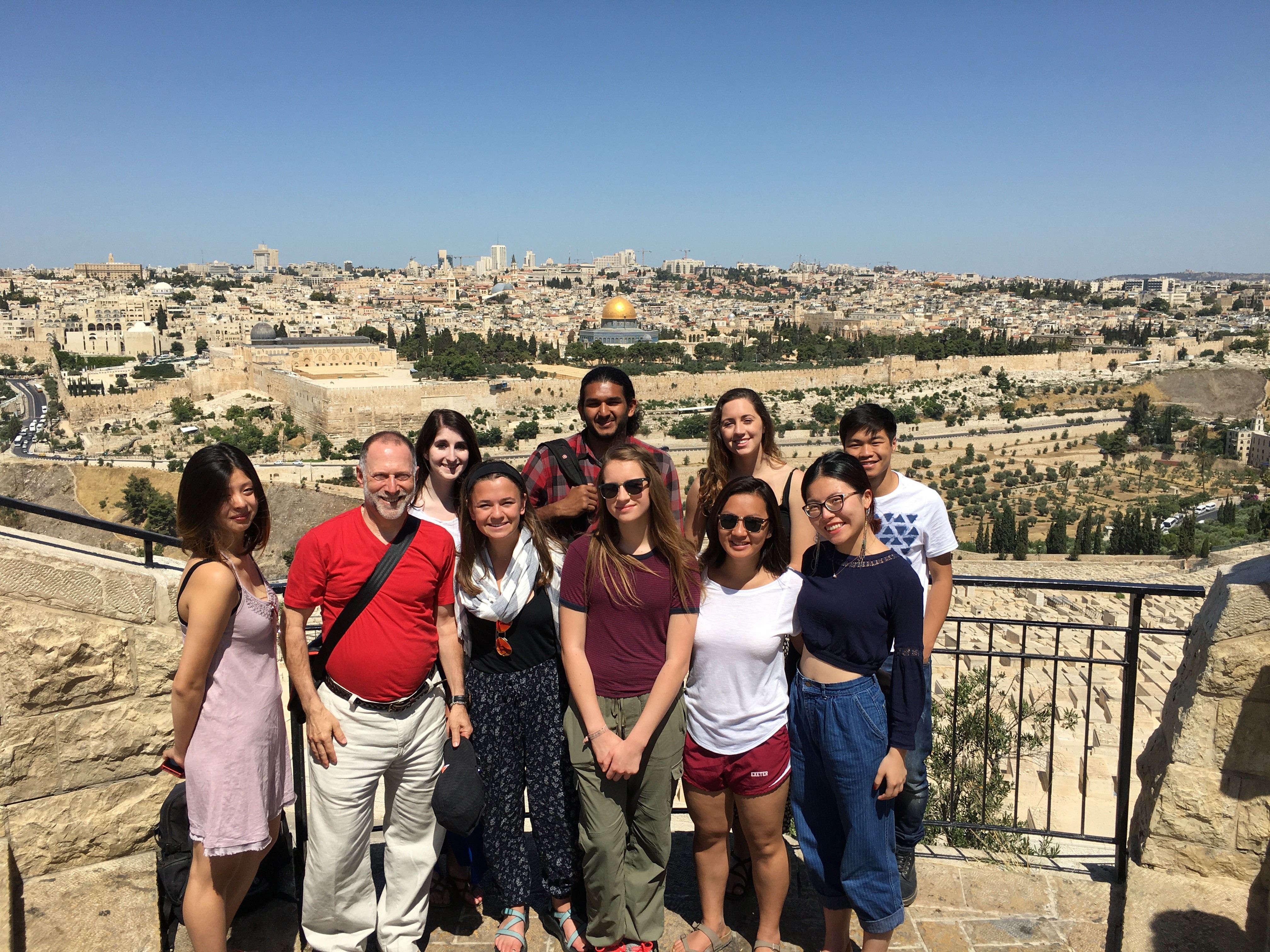The Art of Listening Well

Students visit Jerusalem Temple Mount/Haram al-Sharif during an intensive summer course examining the conflict between Israel and Palestine. Photo courtesy of Shalom Staub.
Students delve into both sides of Israeli-Palestinian conflict
by MaryAlice Bitts-Jackson
Hopes ran high on Sept. 13, 1993, as Israeli and Palestinian leaders signed an agreement that marked a first step for an independent Palestinian state alongside Israel. But two decades and many broken promises later, peace still has not arrived for Israelis and Palestinians. Why is a peaceful resolution so elusive in this war-torn region, and where do we go from here?
Nine students probed that complex issue when they traveled to Israel and the West Bank as part of a new, four-week summer course, Israel/Palestine: Exploring Conflict Resolution Strategies in an Intractable Conflict. By visiting historic sites and settings and interacting with Israeli and Palestinian scholars, students, activists, public officials, nonprofit leaders and others, the Dickinson students developed a deep and multidimensional understanding of the historic, cultural, political and psychological factors of the ongoing dispute, and a nuanced understanding of the historic, cultural and psychological factors that inform each side.
The course began with two intense days of traveling across central Israel viewing the same landscape through Israeli and Palestinian perspectives—from the 19th-century immigration of Russian Jews and British Mandate era detention camps for Jews fleeing the Holocaust to historic Palestinian urban neighborhoods and rural villages whose Palestinian identity has been all but erased since the 1948 Arab-Israeli War.
The students visited museums, universities, markets, factories, villages, nonprofit organizations, checkpoints, sites of fighting and other culturally and historically significant settings in Israel and in the Palestinian territory of the West Bank. Along the way, they met with Jewish and Palestinian scholars; students; local officials; activists, including former political prisoners and Palestinian Liberation Organization (PLO) members; as well as ordinary citizens, such as a family that immigrated to Israel in the 1980s. The trip also included visits to sites with religious significance to Jews, Christians, Muslims and Samaritans, and interactions with staff from 23 nonprofit organizations devoted to human rights, education, community development, direct action protest, community organizing and peace advocacy.
Each experience added to the students’ understanding of how polarized collective memories and mindsets inform individuals’ and groups’ beliefs and acts, says Shalom Staub, associate provost for academic affairs and civic engagement and contributing faculty member in Middle East studies, religion, Judaic studies and sociology. Staub, who directs Dickinson’s Conflict Resolution Center, developed and led the course, during which students kept daily journals, contributed to a class blog and wrote several papers reflecting on what they’d learned.
Interactions with community leaders and activists led Selena Gould ’19 (sociology) and Ikram Rabbani ’17 (history) to reflect on psychosocial factors of the conflict. In her final paper, Gould wrote that a victimization mindset is a key barrier to peacemaking, because those who identify as victims do not seek to enact change, do not empathize with the opposing party and do not allow themselves to build a relationship with those they view as oppressors. Rabbani zeroed in on the language used by those he met, writing that “war language” both reflects and exacerbates tensions.
Both of the students note that the more deeply they dug into this complex issue, the more complexities they uncovered—and that was the point.
“A lot of times, our society paints things in black and white—you’re either pro-life or pro-choice, pro-gun control or pro-guns, pro-Israel or pro-Palestine. But the reality is that issues are rarely black and white, and everyone’s unique experiences and narratives shape their beliefs,” says Norma Jean Park ’18 (international studies), who was struck by the dangers and stresses of living in a sharply divided society while speaking with a Palestinian woman who lived along the wall separating the West Bank from Israel.
“Looking at the two very different sides of this conflict up close has taught me the importance of listening to every perspective before passing judgment,” she adds. “While I still have strong opinions about many social issues, I am trying to consider the other side’s point of view.”
Learn more
- Exploring Conflict Resolution in an Intractable Conflict: Class Blog
- American and Global Mosaics
- “Conflict Resolution at Dickinson Beyond the Classroom”
- Latest News
Published August 12, 2016